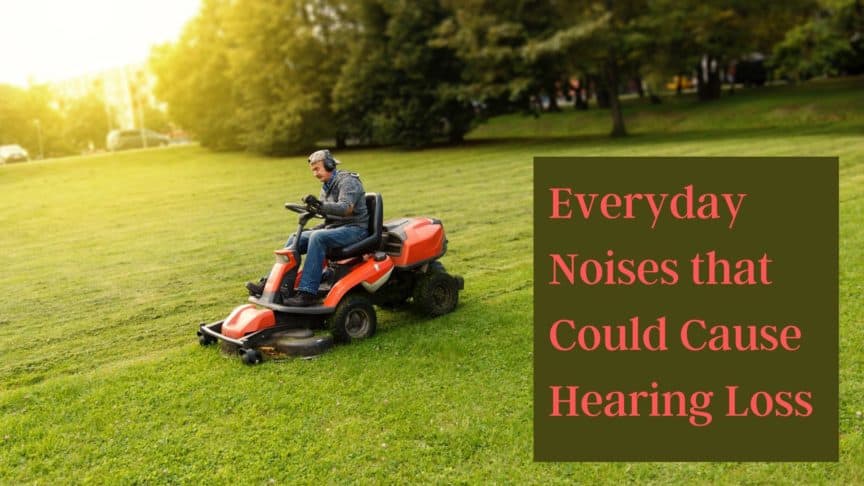- Navigating Concerts When Wearing Hearing Aids - April 28, 2024
- How to Care for Infants With Hearing Loss - April 15, 2024
- Hearing Aid Tips for Runners - April 5, 2024
While age related hearing loss is the most common type, noise induced hearing loss is rapidly affecting more people of all ages. This is because noise can affect your hearing at any stage of your life. While it is commonly recognized that workplace exposure is a danger to hearing, many people overlook many of the other sources of noise which can be equally or even more damaging.
Understanding Decibels
The intensity of sound is measured in decibels (dB). A whispered conversation normally measures around 30 decibels, while a conversation between two people averages around 60dB. Sounds under 80 decibels are safe for prolonged exposure but generally people begin to register sounds as “noisy” typically around the 70dB. However, anything past 85dB puts your hearing at risk. It is important to identify sounds around your which exceed safe listening levels because the hearing damage it can cause is permanent.
It’s important to understand that it is not just the level of exposure, but the length of time you are exposed. For instance, an exposure of 85dB will only start to cause damage after a constant exposure for 8 hours. However, how we perceive the loudness of sound doubles every 10dB and the time it takes to cause damage shrinks quickly. At 95 dB it may only take 50 minuets for permanent damage to occur. A noise which reaches 120dB will immediately damage your hearing and cause ear pain, while sounds which surpass 150dB can cause the ear drum to rupture!
Everyday Noise
The professions which put hearing at risk most include, construction, manufacturing, law enforcement and the military, however you don’t need even have a noisy job to damage your hearing. Often damage occurs while you are enjoying leisure time, hobbies, and recreation. Harmful sound can happen when we are out in the world, on our way to work or even in your own home. Here are some common places where noises must be noted and protected against, in order to protect your hearing for the future.
Trains, Planes and Automobiles
Even if your job isn’t noisy your commute could be. If you take a train, subway, or light rail to work sounds approaching the station can range from 80 to 110 decibels. However, for the millions of people in the US who drive to work, they are not necessarily safer from loud noise. Trucks and busses can reach 90dB. Levels of highway traffic noise typically range from 70 to 80 dB(A) at a distance of 50 feet away. If you drive with your windows down these levels can easily exceed safe listening levels for an extended amount of time, depending on the length of time your commute takes. Measure the sound levels during your commute. If you encounter sounds exceeding 85dB it’s a good idea to travel with hearing protection.
Noise in the Home
If you live in a noisy area, it is a good idea to cover your windows with curtain and lay down carpets to absorb excessive sound. Not addressing constant noise in your neighborhood can cause stress and a constant release of cortisol (stress hormone) if not contained. However, with in our home we may be creating a louder environment than we may suspect. Indoors, food processors, blenders and vacuum cleaners can all reach concerning decibel levels. If you run any of these devices at once, with the stereo blasting, then you can have a serious problem.
Leisure
It is okay to enjoy loud hobbies, but it is best to be prepared to protect your hearing. For instance, if you enjoy motorboating, always wear hearing protection. It is not worth the cost to your hearing. If you enjoy hunting, make sure you invest in hearing protection specially designed to avoid hearing damage. This nature of hearing protection lets quiet sounds such as approaching game, while cutting off the loud sounds of a firearm. However, one of the biggest threats to our ears, many are not even aware is an issue. The use of earbuds connected to personal listening devices such as Smartphones and Mp3 players. These have the potential to blast levels of 100-110dB directly into our ear canal for hours on end. Keep your volume below 60% of its potential and be sure to take listening breaks.
Addressing a Hearing Issue
While hearing loss is permanent, it is not untreatable. To find out how we can help you hear your best, set up a hearing exam today. We can help address all your hearing needs.

